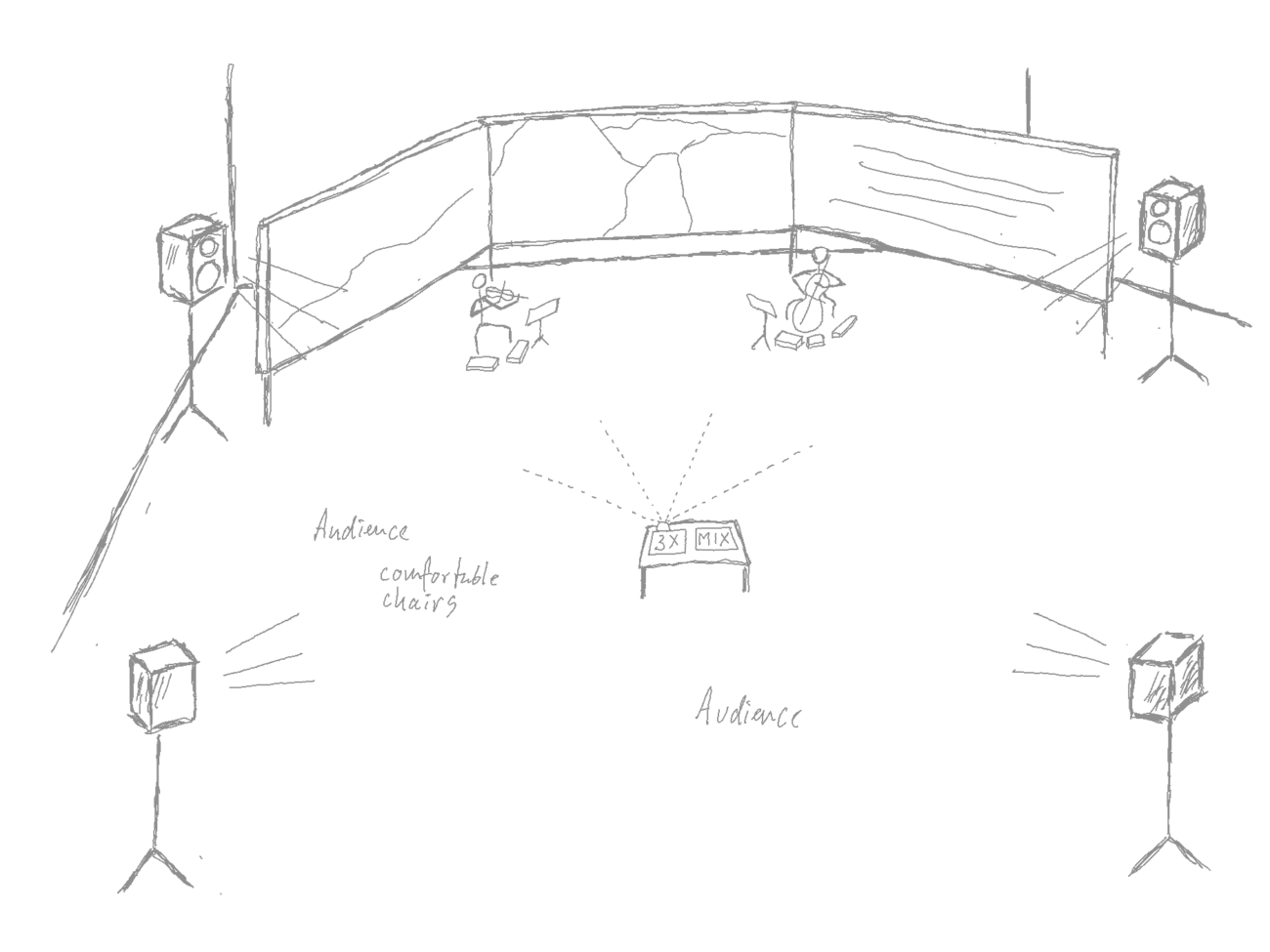Essayistic concert film – 2024 – 2 h 45 min
Blodveien is an immersive essayistic concert film about the logic of forced labour and the culture of oppression. Almost 3 000 Serbian resistance fighters died in German SS and Norwegian Hirden’s custody in 1942-43 while building short and essential stretches of road in Norway when Hitler instead insisted on building a Polar Railway to support his military campaign against the Soviet Union. Only one in four of the Serbians came out alive. Several of the roads are still in use.
The footage observes these stretches of road from a small airplane and along the roads by car as well as on ground in prison camp ruins by use of three video channels. A textual, voiceless narrative is reasoning on what happened and how it could happen. Maps and archive photos of the time provide insight into lives that should have been lived.
The electronic music is persistent, holding on to durational sound textures of slowly developing spectrums of drones, noise and soundscapes from the prison camps. Two musicians on stage – Cello and Hardanger Fiddle – top the soundscape with a spectrum of sounds and noise-based textures that merge with the electronic music.
Emphasis on German culture through voluntarism
During WW2, Hitler wanted a continuous railway through all Norway up to Murmansk to support his military campaign against the Soviet Union and his Lebensraum expansionist ideas. Northern Norway was poorly connected prior to the war, and there were no roads nor railroads connecting to either Sweden, Finland nor the Soviet Union north of Narvik.
As a result of the Nazi emphasis on German culture through voluntarism (the power of the will creating a new reality) being in conflict with military strategic perspectives and engineering realities, a number of Yugoslav captives (mostly Serbians), not being recognised formally by Nazi-Germany as war prisoners, were set to work and die in a few especially atrocious SS-run concentration camps, assisted by guards from the Norwegian Hirden.
The Blood Road sections were first built by the Yugoslav captives, while fragments of the Polareisenbahn and other projects were built by recognised prisoners of war primarily from the Soviet Union, but also from other countries, under the auspices of the German Wehrmacht and the paramilitary Organisation Todt. Those prisoners of war were more in numbers and approximately 10 % died. Norway, being idealised by Hitler, had the largest population of war captives set to work in forced labour in relation to the population of the country. While a common notion is that the Germans built infrastructure in Norway during WW2, the reality is rather that the prisoners of war were forced to sacrifice life and health to build that infrastructure.
Technical needs – overview
Multichannel PA system with top and bottom loudspeakers.
Three synchronised projectors and three large screens adjacent to each other.
The screens must be placed so that two musicians can sit in front of the screens and below so the musicians will not obscure the view.
Cello and Hardanger Fiddle to perform live. Microphones for amplifying the two instruments to be mixed with the preproduced music.

Imprint
The idea was conceived 2019, research and planning went on up to 2022, when pre-production from the air and on the ground was made, and finally text script written and music composed 2023-24, with last post-production being made autumn 2024.
The text script is at present only in Norwegian. However, I hope to have it translated to English, Serbo-Croatian, German and Russian to make the project available to a broader audience.
Concept, composer, text – Knut Olaf Sunde
Co-composer, cello – Tanja Orning
Hardanger fiddle – Helga Myhr
Sound technician – Cato Langnes
Cinematographer, post production – Kim Aspen
Audio post production – Niklas Adam
Support
The project is supported by
– the Arts Council Norway
– the Audio and Visual Fund Norway (Fond for lyd og bilde)
– the Fritt Ord Foundation and
– Notam
